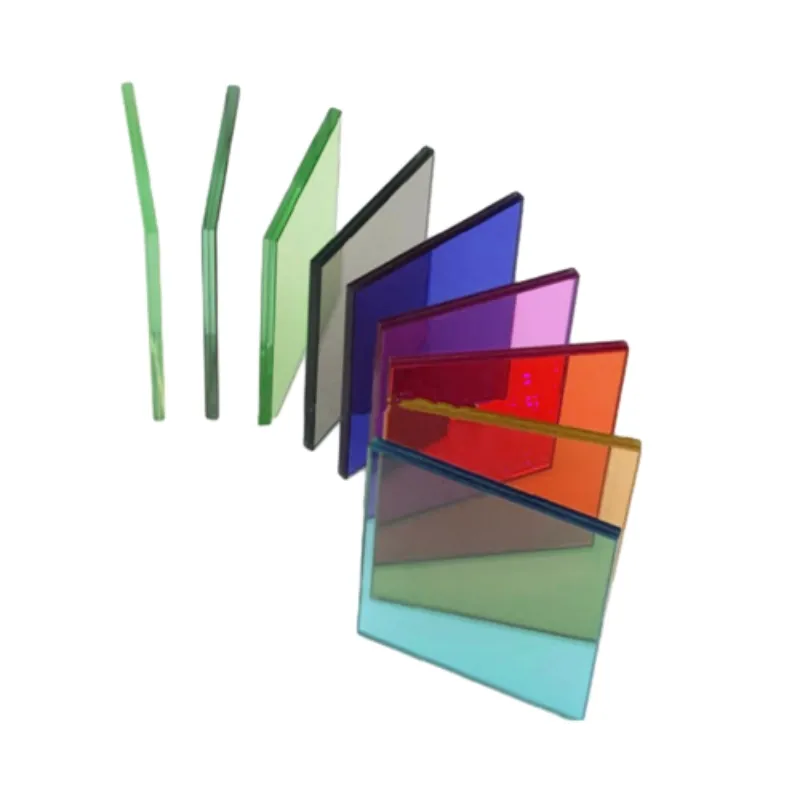Nov . 07, 2024 05:49 Back to list
Innovative Applications of Infrared Reflecting Glass in Modern Architecture and Design Technology
The Advantages and Applications of Infrared Reflecting Glass
Infrared reflecting glass, often referred to as low-emissivity (low-E) glass, is a type of glazing material designed to reflect infrared radiation while allowing visible light to pass through. This innovative glass is increasingly being utilized in various fields, particularly in construction and automotive industries, due to its unique properties that promote energy efficiency and comfort.
One of the most significant advantages of infrared reflecting glass is its ability to control heat transfer. In traditional glass, heat can easily flow in and out, leading to uncomfortable indoor temperatures and increased energy consumption for heating and cooling systems. However, infrared reflecting glass employs a thin metallic coating that reflects a substantial portion of infrared radiation. This characteristic helps to keep buildings cooler in the summer and warmer in the winter, effectively reducing the reliance on HVAC systems and leading to lower energy bills.
The effectiveness of infrared reflecting glass is especially crucial in commercial buildings where large glass facades can contribute to excessive heat gain and glare during hot months. By using this type of glazing, architects and designers can create striking and modern glass structures without compromising the comfort of the occupants. As a result, it plays a vital role in sustainable architecture, contributing to reduced carbon footprints and promoting energy-efficient building designs.
In addition to its thermal insulation properties, infrared reflecting glass also provides excellent UV protection. Prolonged exposure to ultraviolet radiation can damage furniture, flooring, and artworks, causing them to fade over time. By integrating infrared reflecting glass in windows, property owners can safeguard their interiors from harmful UV rays while still enjoying natural light. This makes it an attractive option not only for residential buildings but also for museums, galleries, and retail spaces where protecting valuable items is a priority.
infrared reflecting glass

The automotive industry also benefits greatly from infrared reflecting glass. Many modern vehicles are now equipped with this specialized glass, which helps to improve passengers' comfort by reducing cabin temperature significantly. By minimizing the amount of solar heat that enters the vehicle, infrared reflecting glass enhances the efficiency of air conditioning systems, leading to better fuel economy in combustion engine vehicles and extended range in electric vehicles. Additionally, this technology helps to improve visibility by reducing glare from sunlight, thereby contributing to safer driving conditions.
Moreover, the use of infrared reflecting glass can also elevate the aesthetic appeal of both buildings and vehicles. The glass can come in various tints and finishes, providing designers with creative freedom to achieve the desired look. Whether it's a sleek modern skyscraper or a luxury sedan, incorporating this innovative glazing technology can enhance visual impact while delivering functional benefits.
As the global construction and automotive sectors continue to prioritize sustainability and energy efficiency, the demand for infrared reflecting glass is set to rise. With advancements in technology and manufacturing processes, manufacturers are continually developing new formulations and coatings that enhance the performance of low-E glass, making it an even more appealing choice for architects, builders, and consumers alike.
In conclusion, infrared reflecting glass stands out as a smart solution for modern architectural and automotive designs. Its exceptional ability to reflect infrared radiation while allowing visible light makes it indispensable in creating energy-efficient, comfortable, and aesthetically pleasing environments. As society strives to reduce environmental impact and embrace sustainable practices, the role of infrared reflecting glass in various applications will undoubtedly continue to expand, shaping a more energy-conscious future. Whether it's in our homes, offices, or vehicles, this innovative glass technology is set to play a pivotal part in enhancing our quality of life while protecting the environment.
-
Safety and Style with Premium Laminated Glass Solutions
NewsJun.24,2025
-
Reinvents Security with Premium Wired Glass
NewsJun.24,2025
-
Premium Float Glass Line for Modern Architecture
NewsJun.24,2025
-
Low Emissivity Glass for Energy-Efficient Architecture
NewsJun.24,2025
-
High-Performance Insulated Glass Solutions for Modern Architecture
NewsJun.24,2025
-
Elevates Interior Style with Premium Silver Mirror
NewsJun.24,2025
Related PRODUCTS














